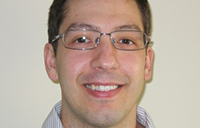York University Professor Michael Rotondi recently presented a talk on advanced statistical methods for urban Indigenous health at the Harvard School of Public Health.

Rotondi, from the Faculty of Health’s School of Kinesiology and Health Science, was invited to present his work on Oct. 27.
Through a Canadian Institute for Health Research (CIHR) grant, Rotondi has been developing and validating new statistical methods to help understand the relationships between health outcomes and their risk factors. Studying ‘hard to reach’ populations, like urban Indigenous people requires highly advanced statistical methods, he said. One new and increasingly common strategy is called respondent-driven sampling. However, current statistical challenges have limited what can be learned from data that has been obtained through this approach.
“Specifically, my work is able to explore the relationship between barriers to accessing health services, such as not having a doctor available, or feeling the provider was not culturally sensitive and their association with chronic conditions, like diabetes, hypertension and cardiovascular disease in Hamilton’s Indigenous population,” he said.
This is important, he noted, as current research has demonstrated a high rate of these and other chronic conditions in Hamilton’s Indigenous community when compared to the general population, which is even more alarming given the relatively young age of this community.
In addition to its statistical importance, his work may provide some insight into the barriers that are preventing appropriate management of these chronic conditions, and improve the health of urban Indigenous communities.
“This is even more important as very little research is available on the health of Indigenous people who are living in cities, and more than half of all Indigenous people are now living in urban areas,” he said.
This work is in partnership with Drs. Janet Smylie and Michelle Firestone at St. Michael’s Hospital and the De dwa da dehs ney>s Aboriginal Health Access Centre in Hamilton and is fully supported by the community.
Finding ways to examine these specific relationships in the data was one of the community’s research priorities.
“I’m very excited to discover new statistical solutions and work with the community to help address this pressing research need,” said Rotondi.


